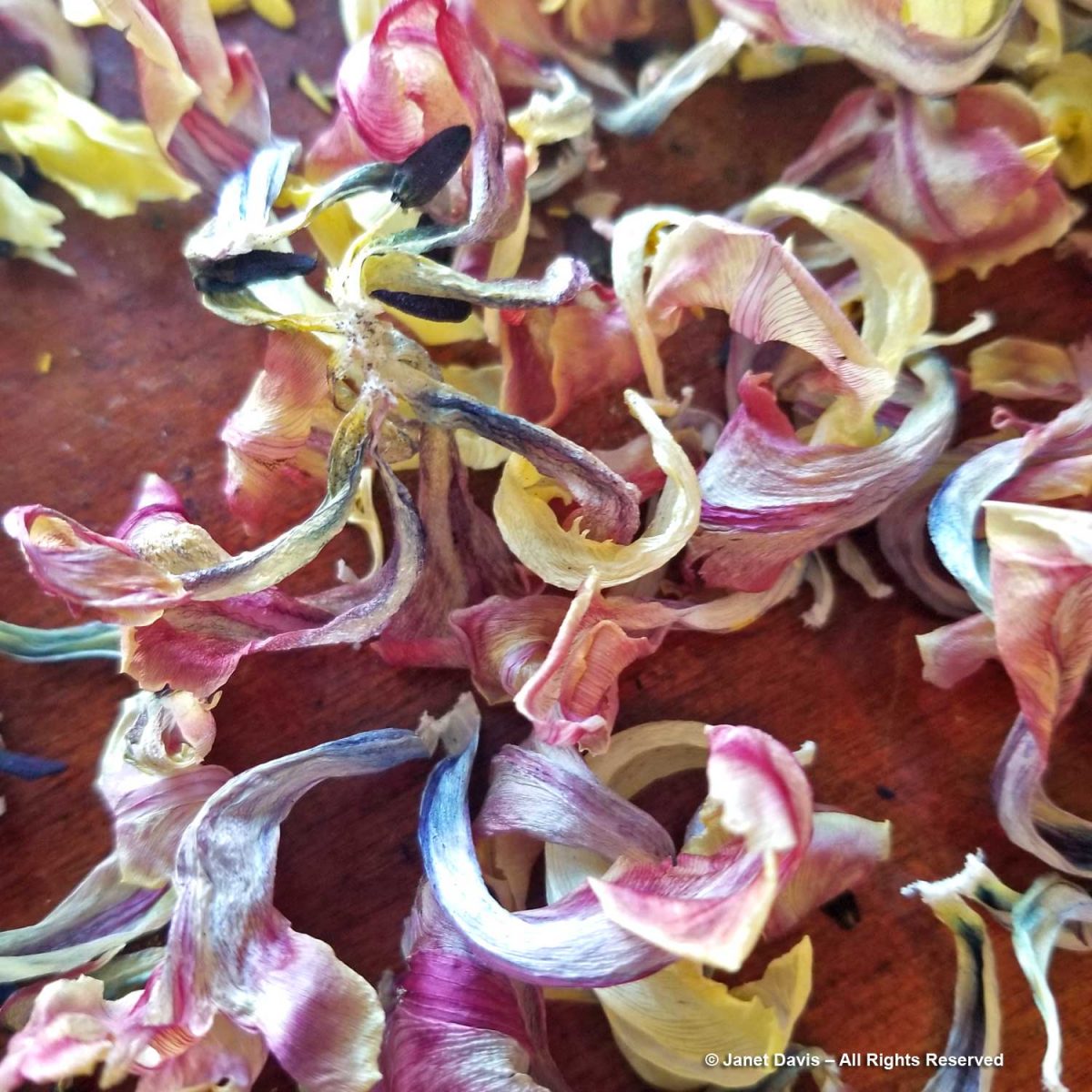It was a March afternoon with the promise of spring in the air – which was good, because spring officially started on the calendar two days later. But we in the northeast know how cruelly the calendar can be tricked into saying things it doesn’t really mean, like “spring”. I was at the greengrocer a few blocks from my house to buy kale and strawberries, but I treated myself to two bunches of double tulips at the premium price of 2 for $13.99. A mediocre wine can be had for that price, but it wouldn’t make me swoon like those goblets of yellow and suffused rose.
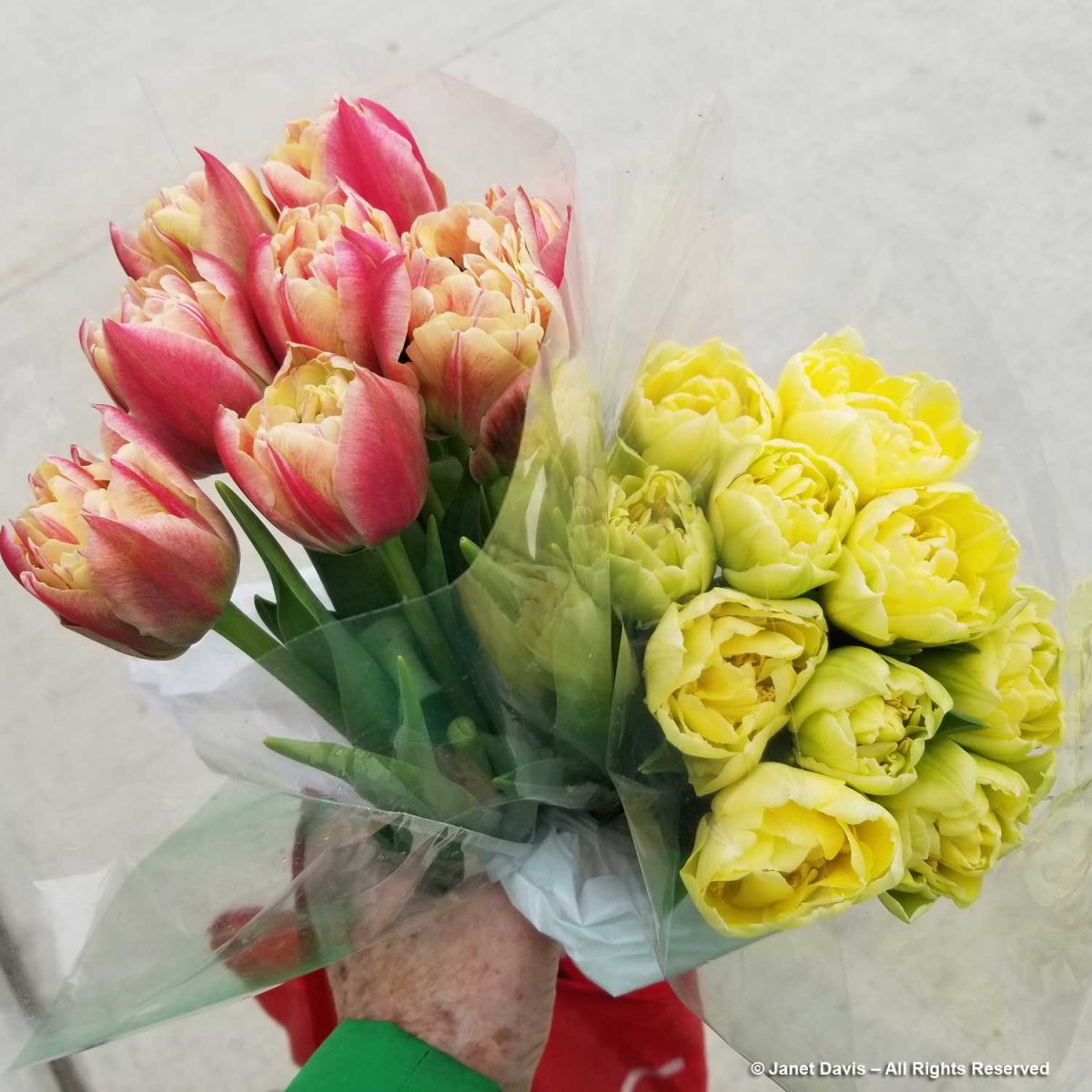
I arranged them in a vase and placed them on a pretty trivet, a gift from my sister-in-law. It was made by her sister, who used the time spent recovering from an injury to learn a beautiful new craft. The tulips seemed honoured and bowed left and right as if in frilly crinolines.
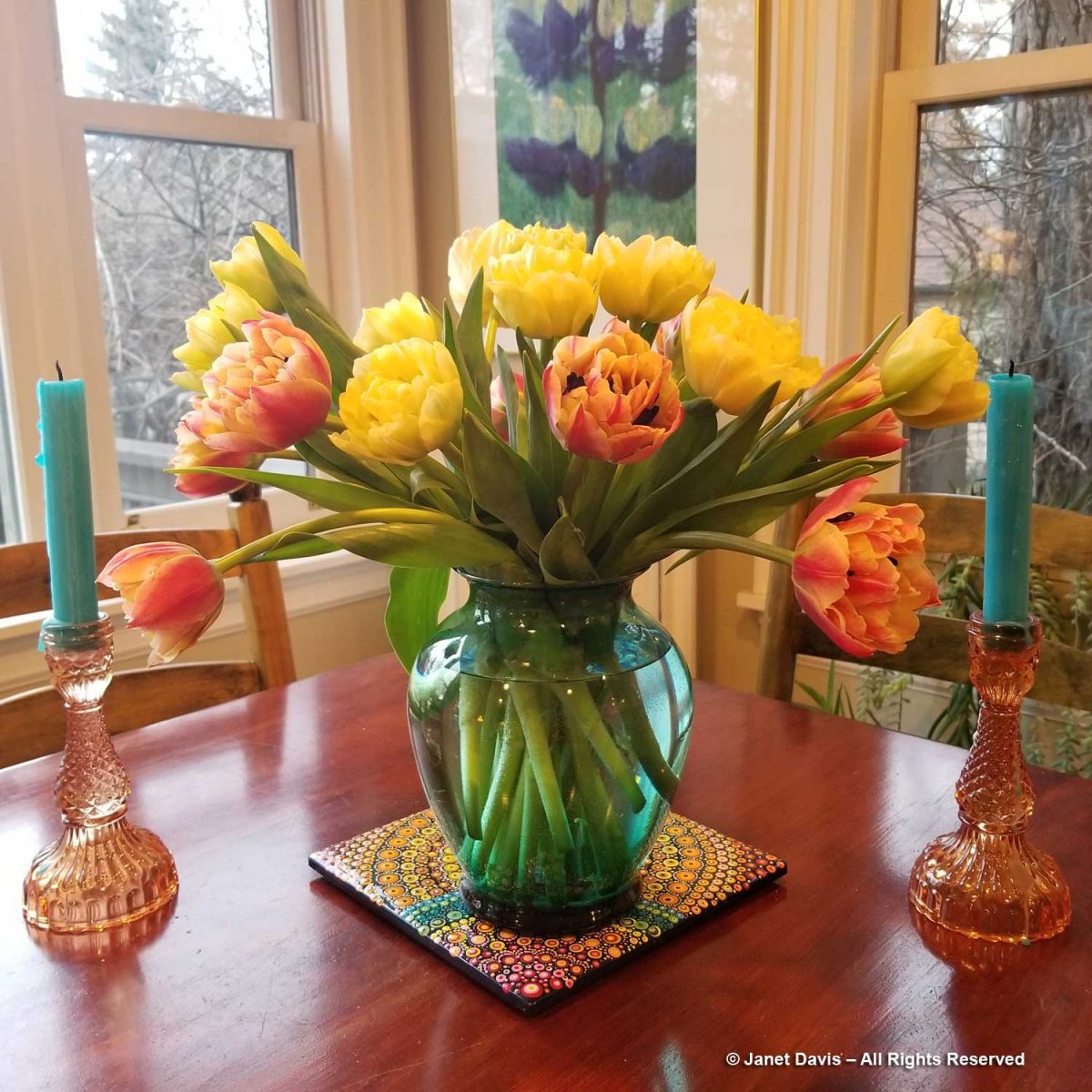
I gazed at them through my glass of chardonnay until they hit the high-wine level where, magically, mysteriously, they and the lupine print and the kitchen window turned upside down in the refracted light. This is explained by the formula of Snell’s Law of Refraction, which I advise you to look up, since I am unable to explain it beyond this: it is the bending of the path of a light wave as it passes across the boundary separating two media, and it’s caused by the change in speed of said wave when it changes its medium.

On Day 2, the tulips opened in the warmth of my kitchen. These two cultivars, yellow ‘Verona’ and bicoloured ‘Verona Sunrise’ are the work of Dutch tulip breeders and hundreds of years of hybridizing from their wild tulip progenitors in central Asia (Kyrgyzstan, Kazakhstan, Tajikistan, Turkmenistan, Afghanistan) and the Mediterranean. In formal tulip classification, my tulips are called “Double Early”. They would have been grown hydroponically in a greenhouse in southern Ontario’s Niagara region and shipped to the grower’s stalls at Toronto’s wholesale Ontario Food Terminal where my greengrocer will have purchased the bunches in tight bud early in the morning.
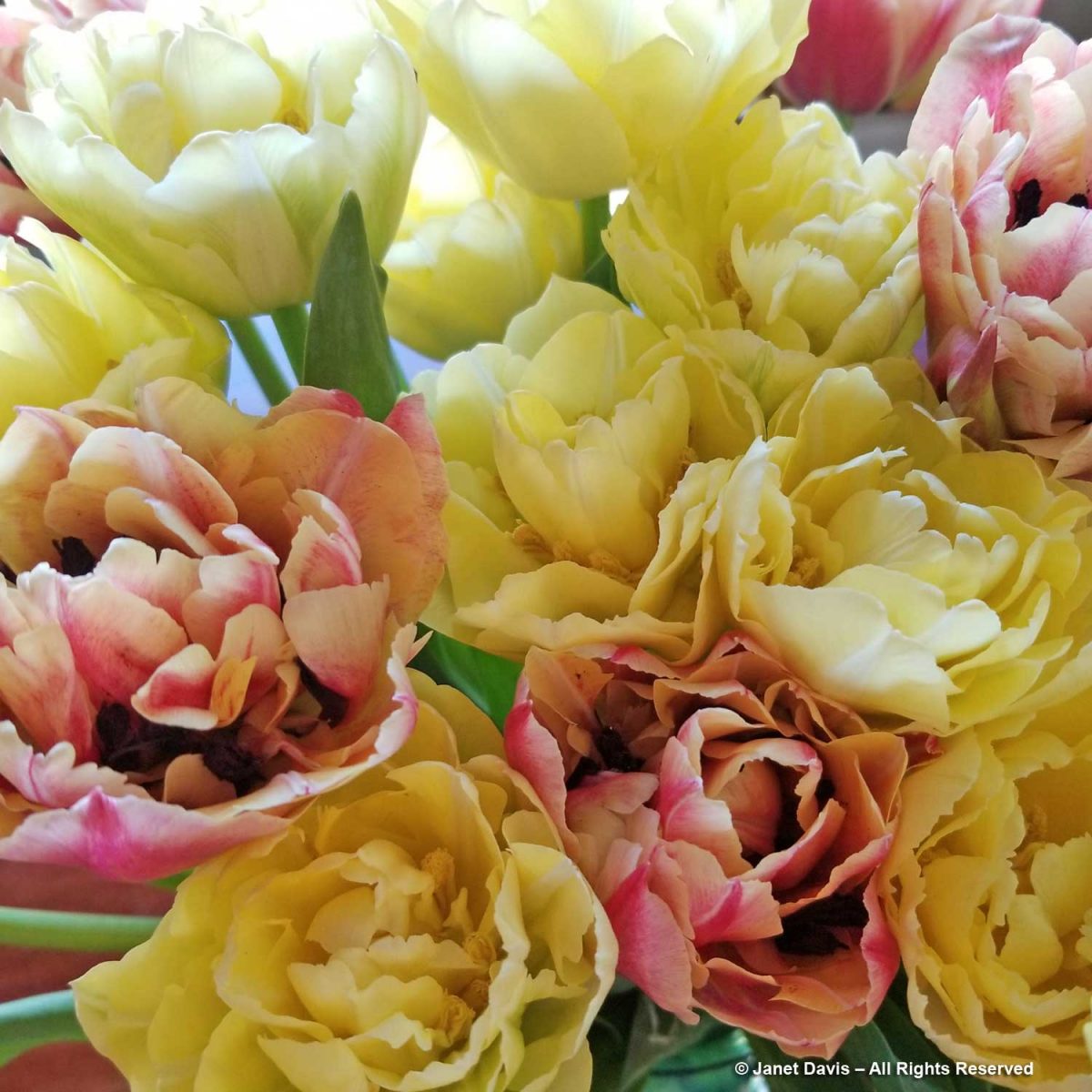
Tulips are members of the Liliaceae family and Yellow ‘Verona’ has stamens with yellow pollen…..
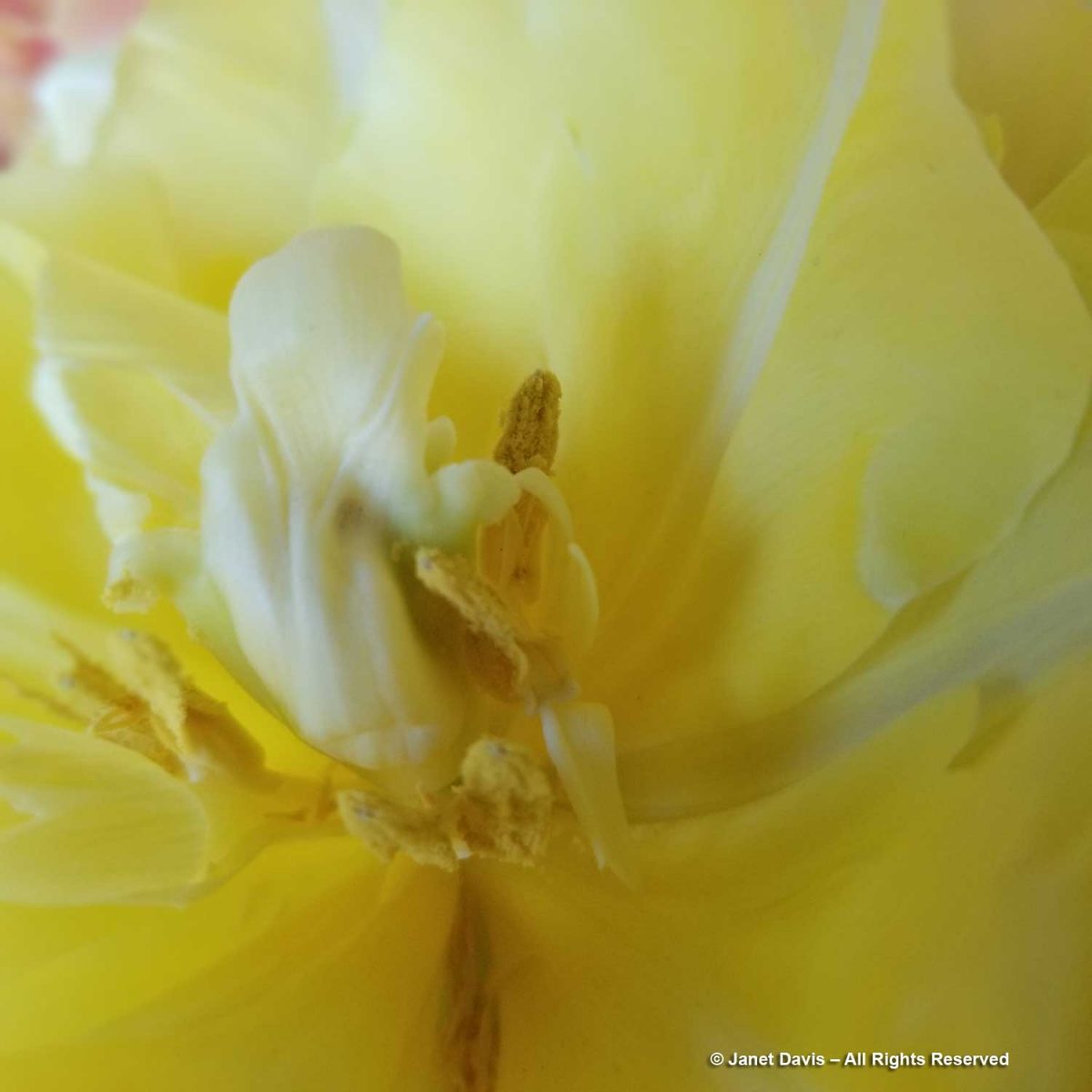
….. while ‘Verona Sunrise’ has dramatic black pollen.
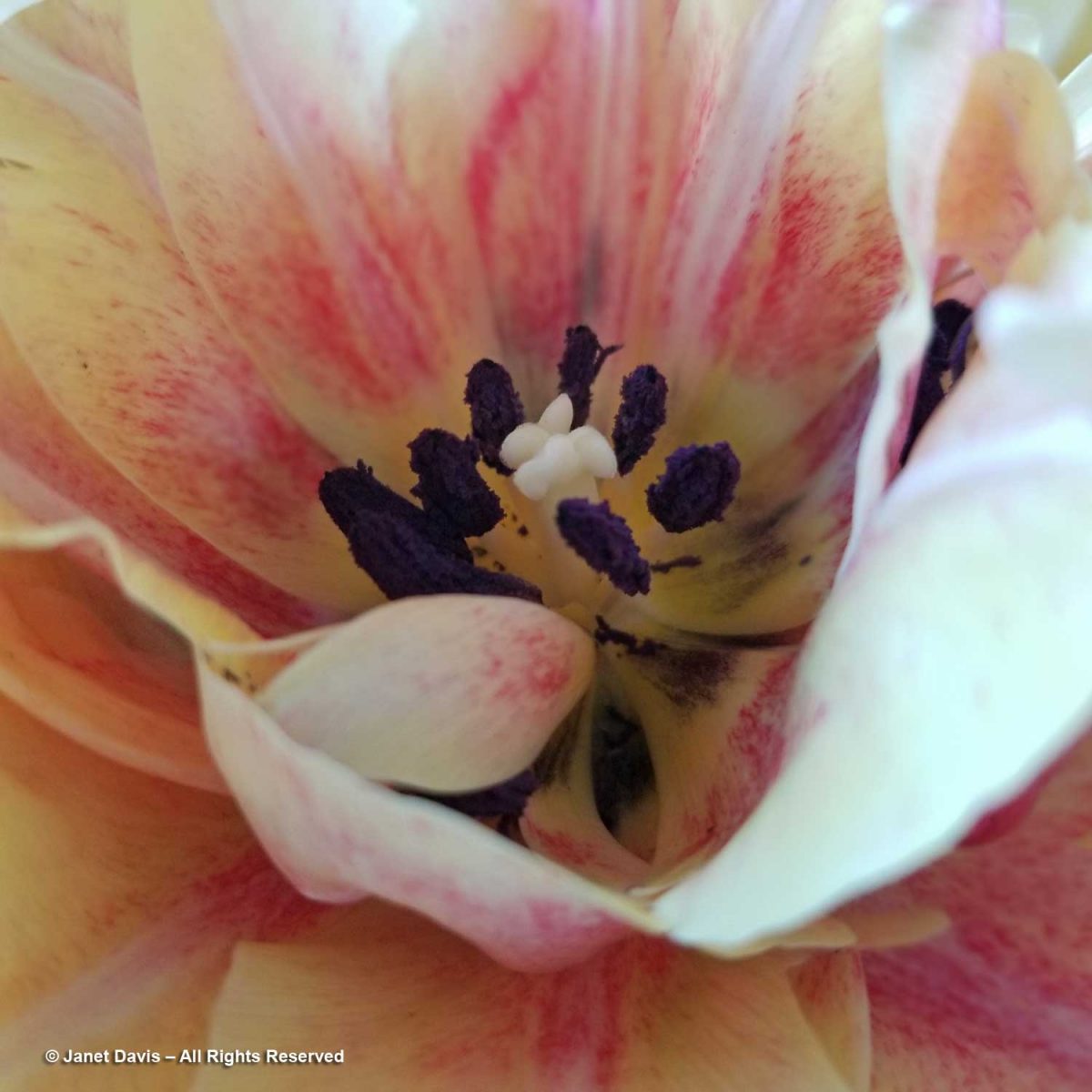
While many people would talk about colourful tulip “petals”, in botany they are referred to as “tepals” since tulips do not bear the sepals we see in many plant families and instead emerge directly at the top of strong stems.
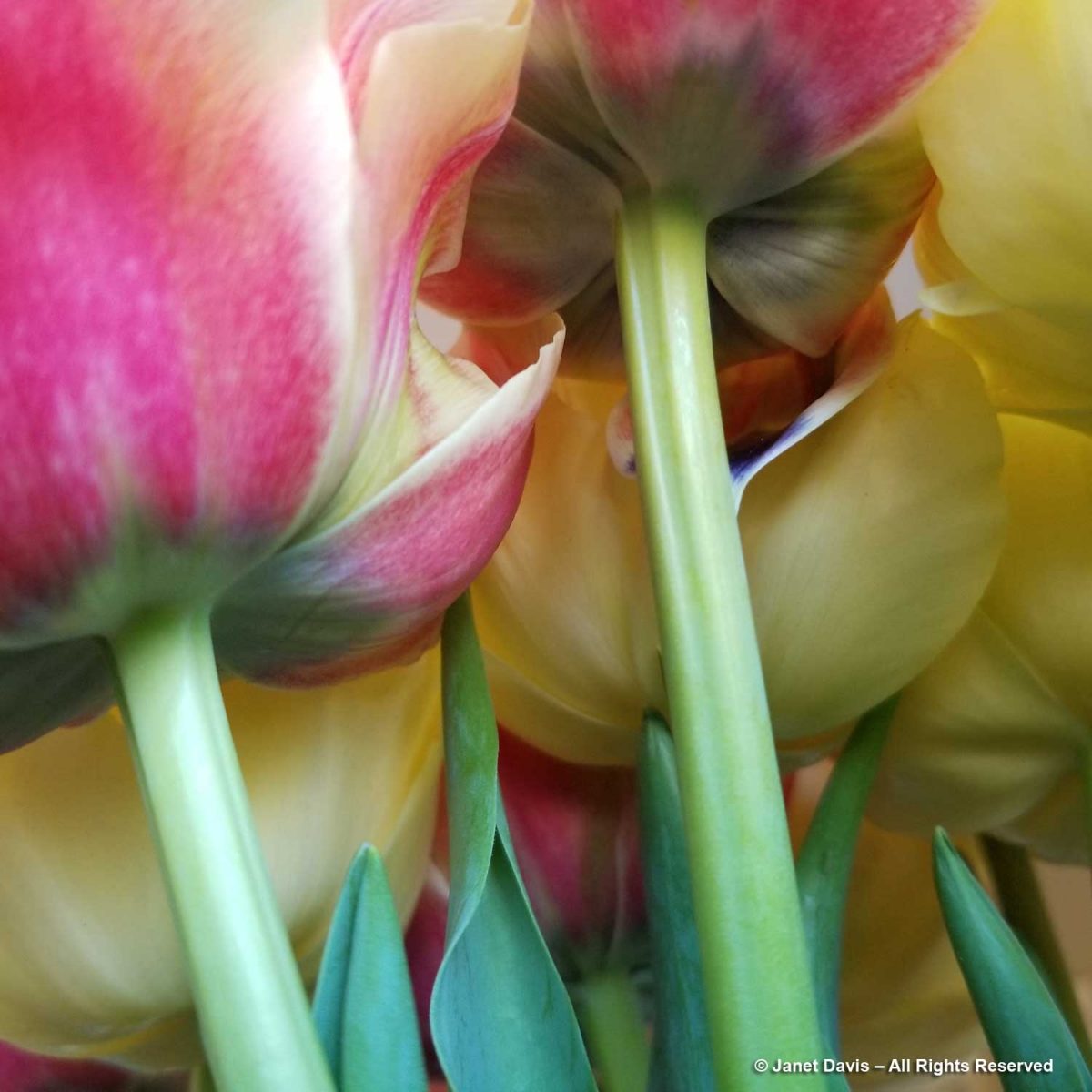
By Day 3, my tulips had opened enough in the warmth of the kitchen that the adjective “blowsy” seemed to apply. But I looked up that word I’ve used to describe certain double peonies and perfumed roses to discover this etymology: Blowsy – “disheveled, unkempt,” 1778, from obsolete blouze “wench, beggar’s trull”. Hmmm, I felt I should have apologized to my tulips, which seemed to have let their morals slip in just two days.
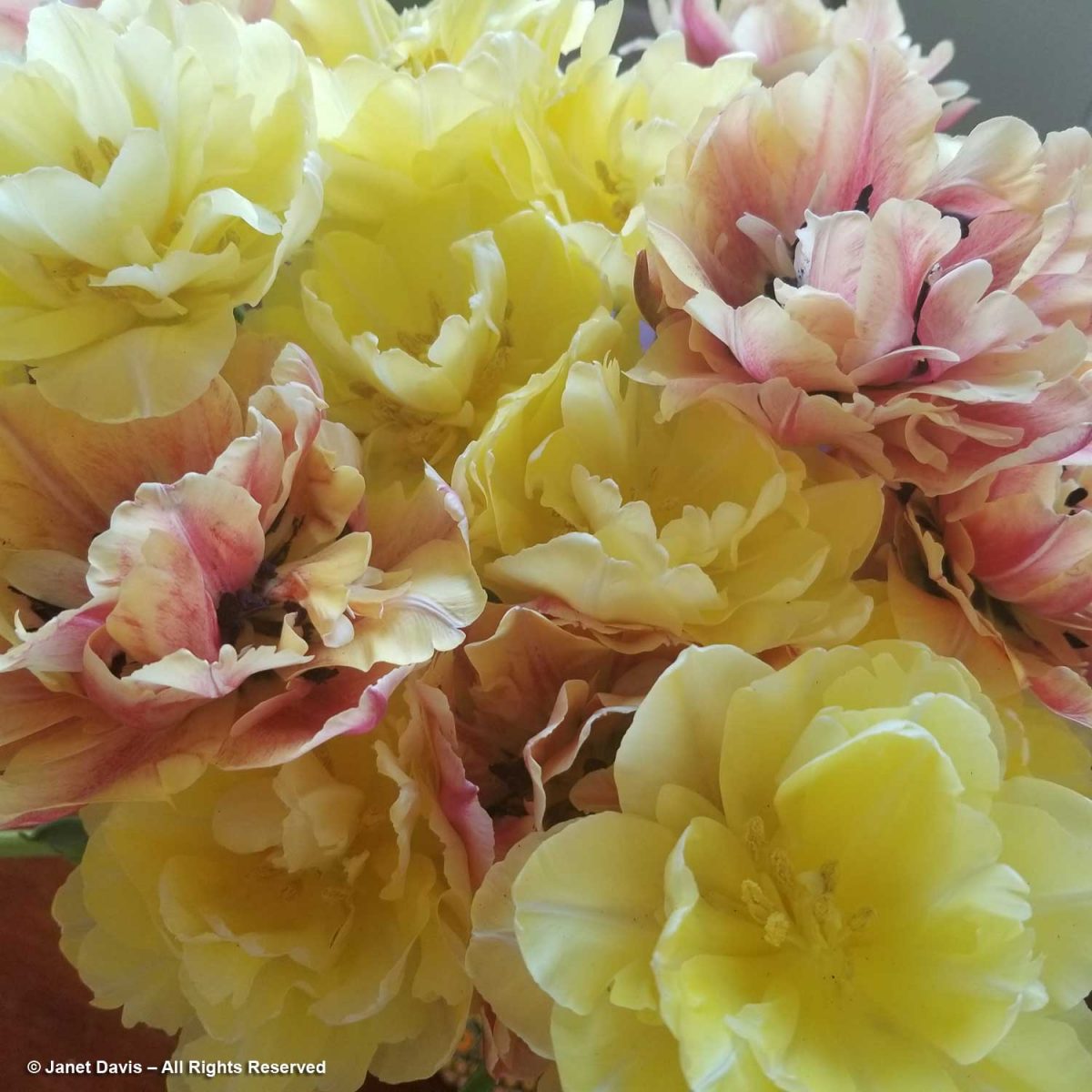
Three days later, ‘Verona Sunrise’ had lost her will. She was on a downward slide….splayed and tired. Perhaps because of my own advancing years, it occurred to me that I should not toss the wilted blossoms into the recycling bin, but rejoice in their decline.
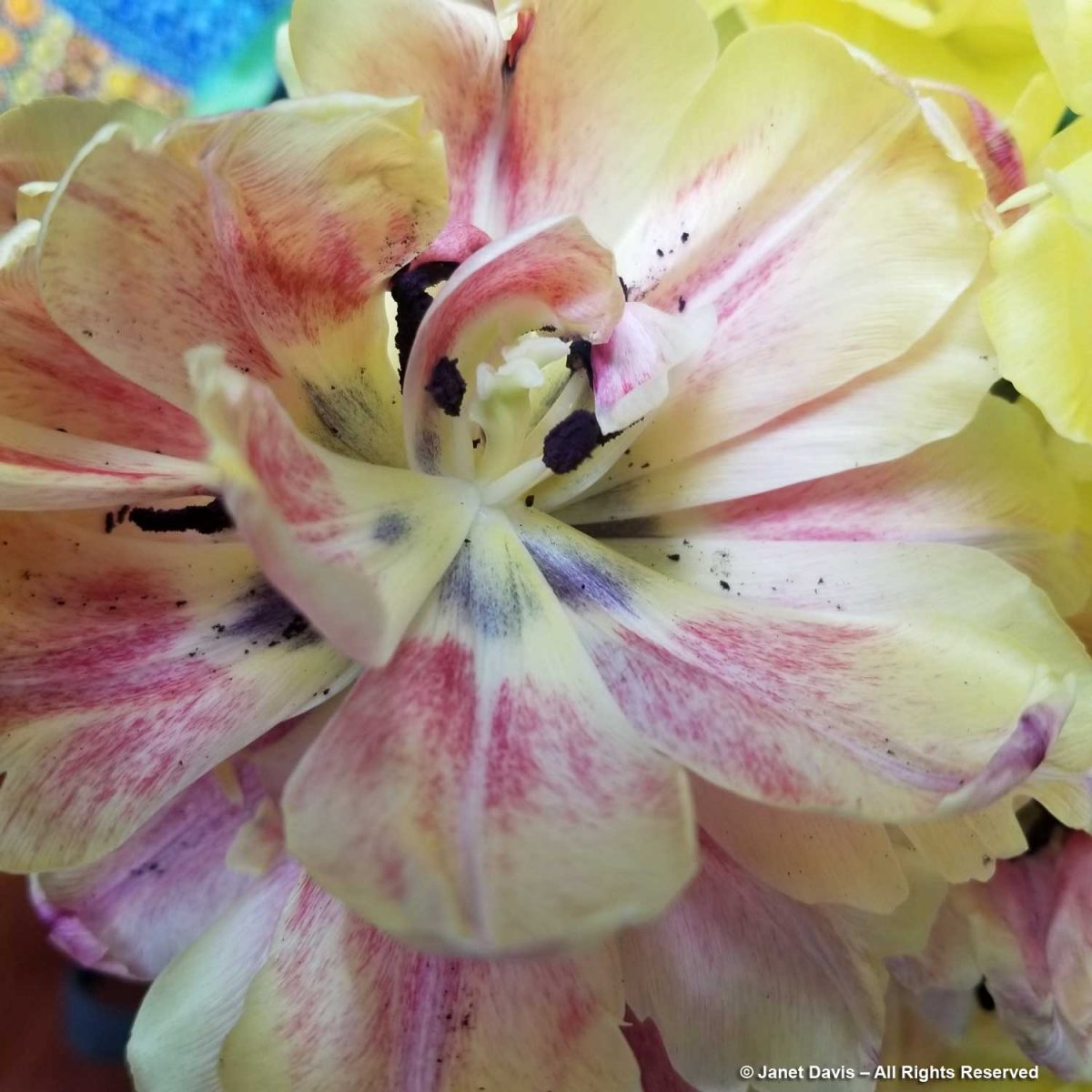
Besides, my bouquet still had a relaxed integrity, though ‘Verona’ swooped towards the table with nothing to catch her except the rim of the vase.
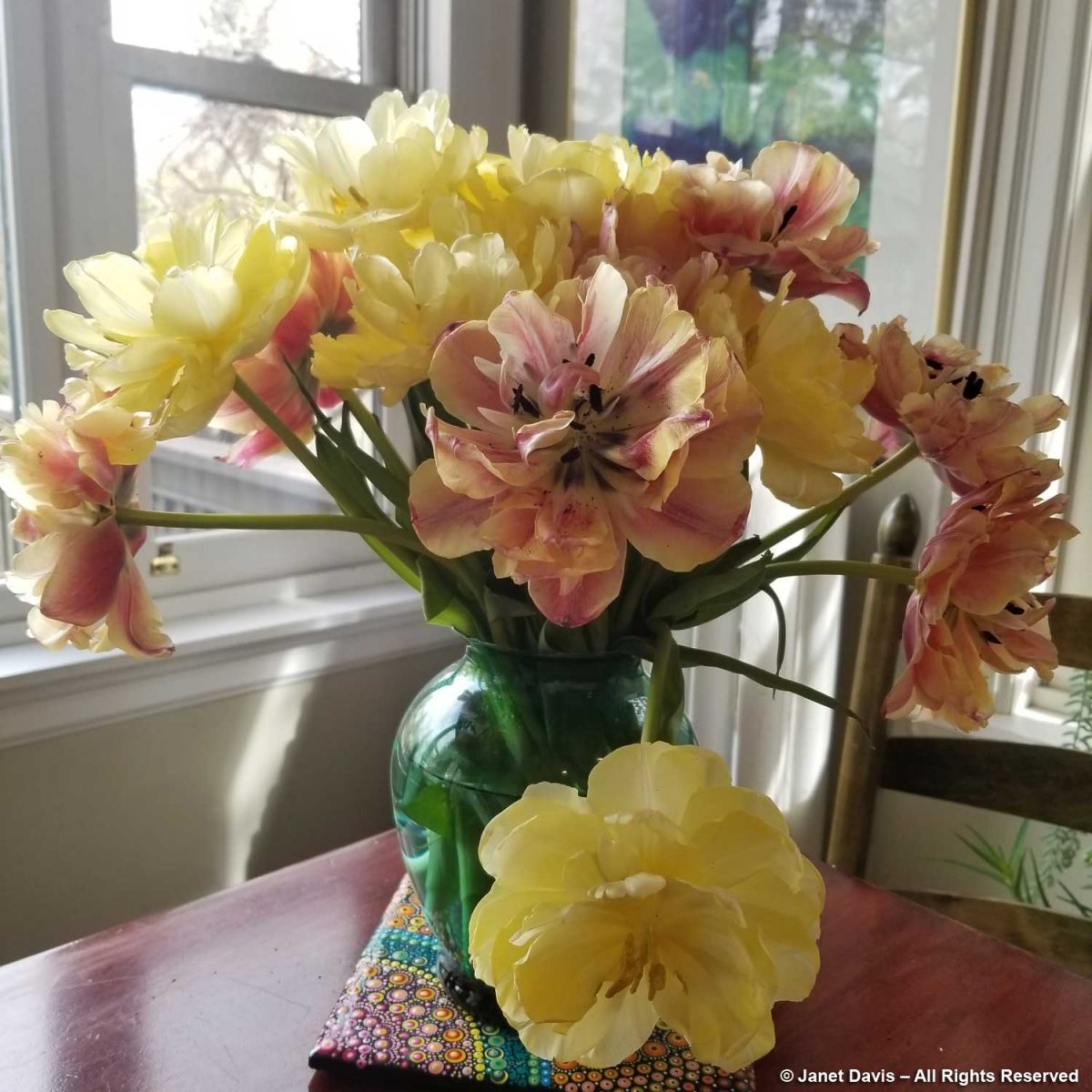
Day 8 brought a kind of silken elegance to the tulip’s dénouement….
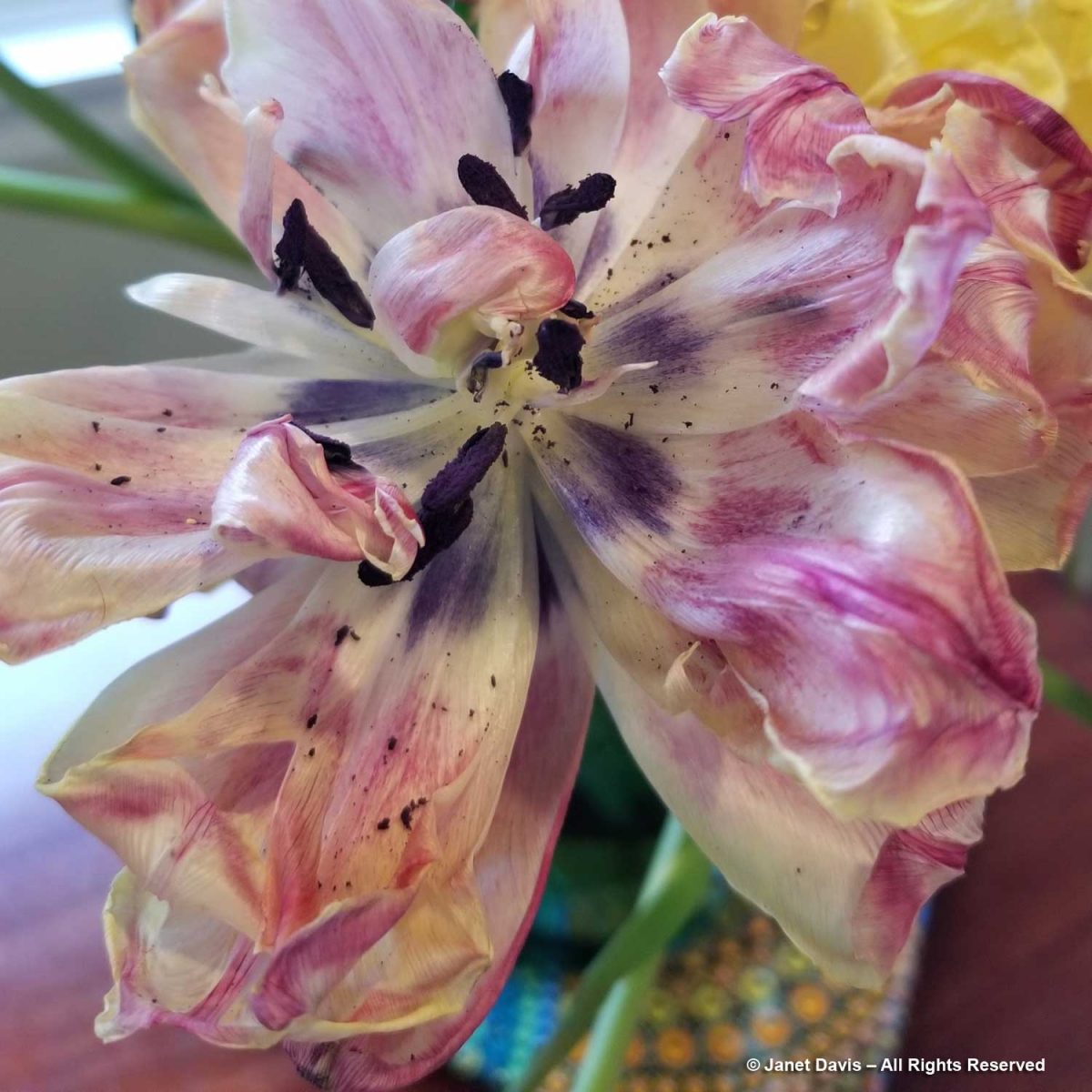
…. and the flowers seemed less like a bouquet and more like abstract still life, frozen in time.
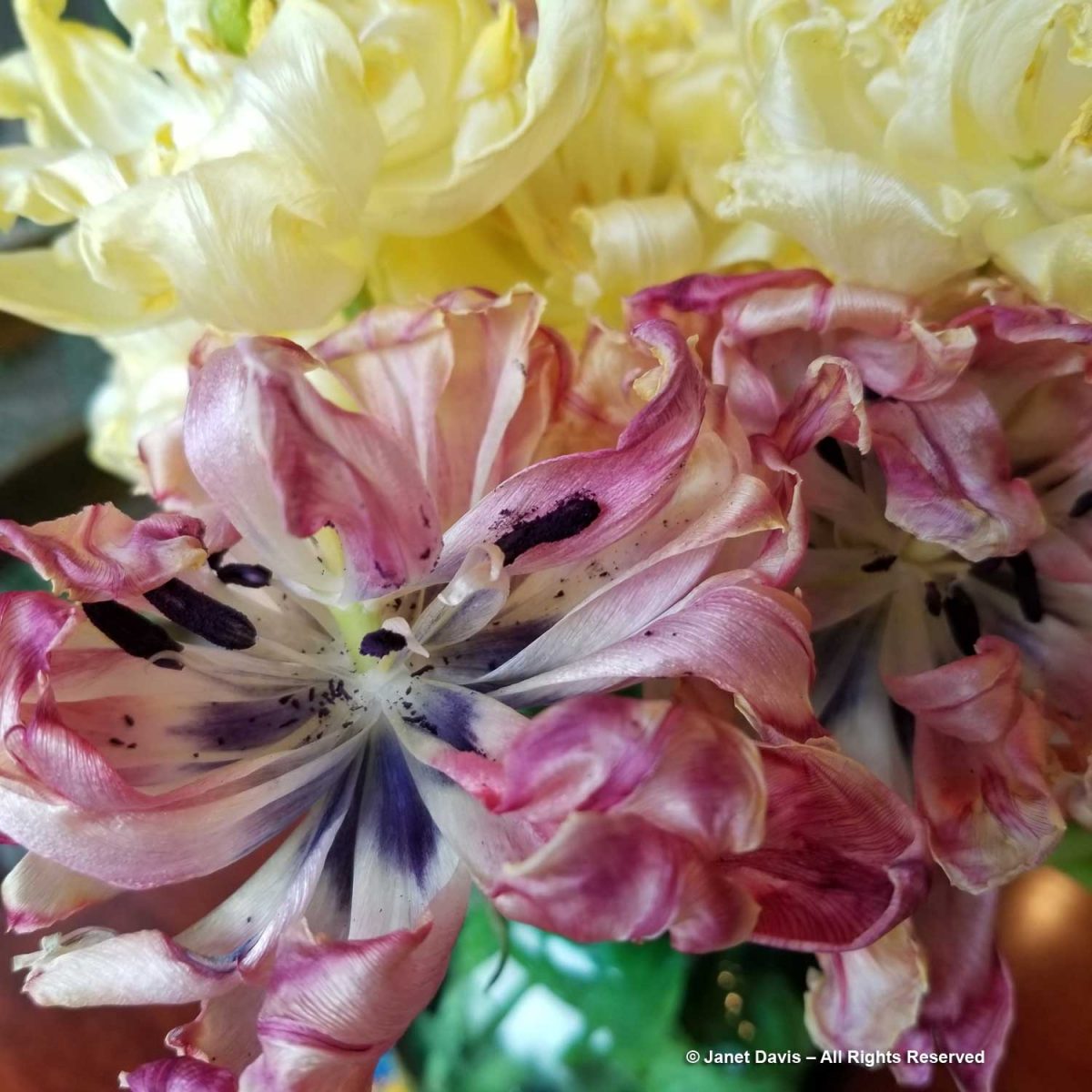
But the virile, jet-black pollen still swirled around the stamens… a dark vestige of its place in nature, in the mysterious, ancient sex life of the tulip.
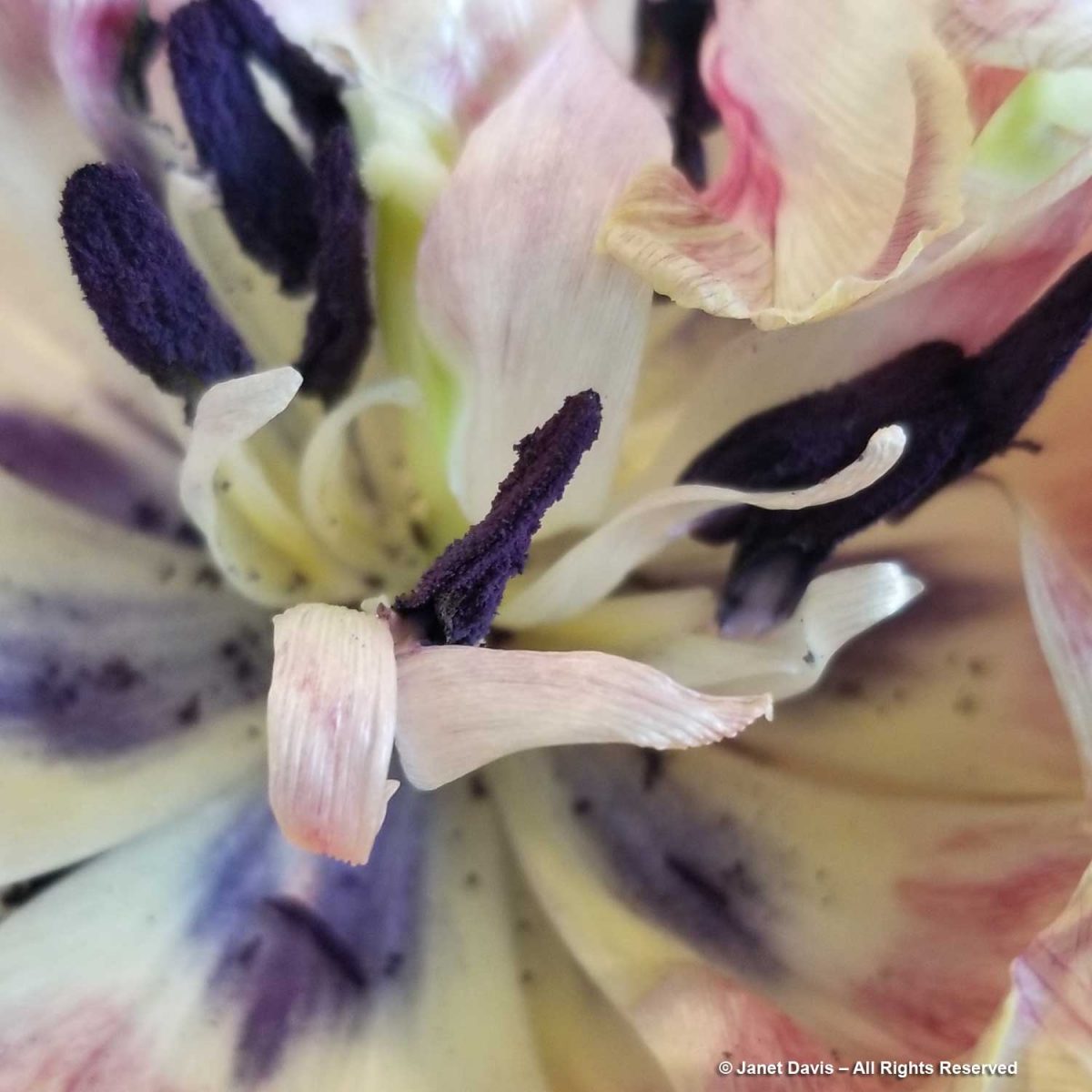
It was Sunday dinner; my son was arriving to share the table, so I invited the elderly tulips to be our guests. And we decanted a hearty red wine to toast them.

On the 12th day, the tulips begged for mercy. It was almost time to say goodbye…. almost.
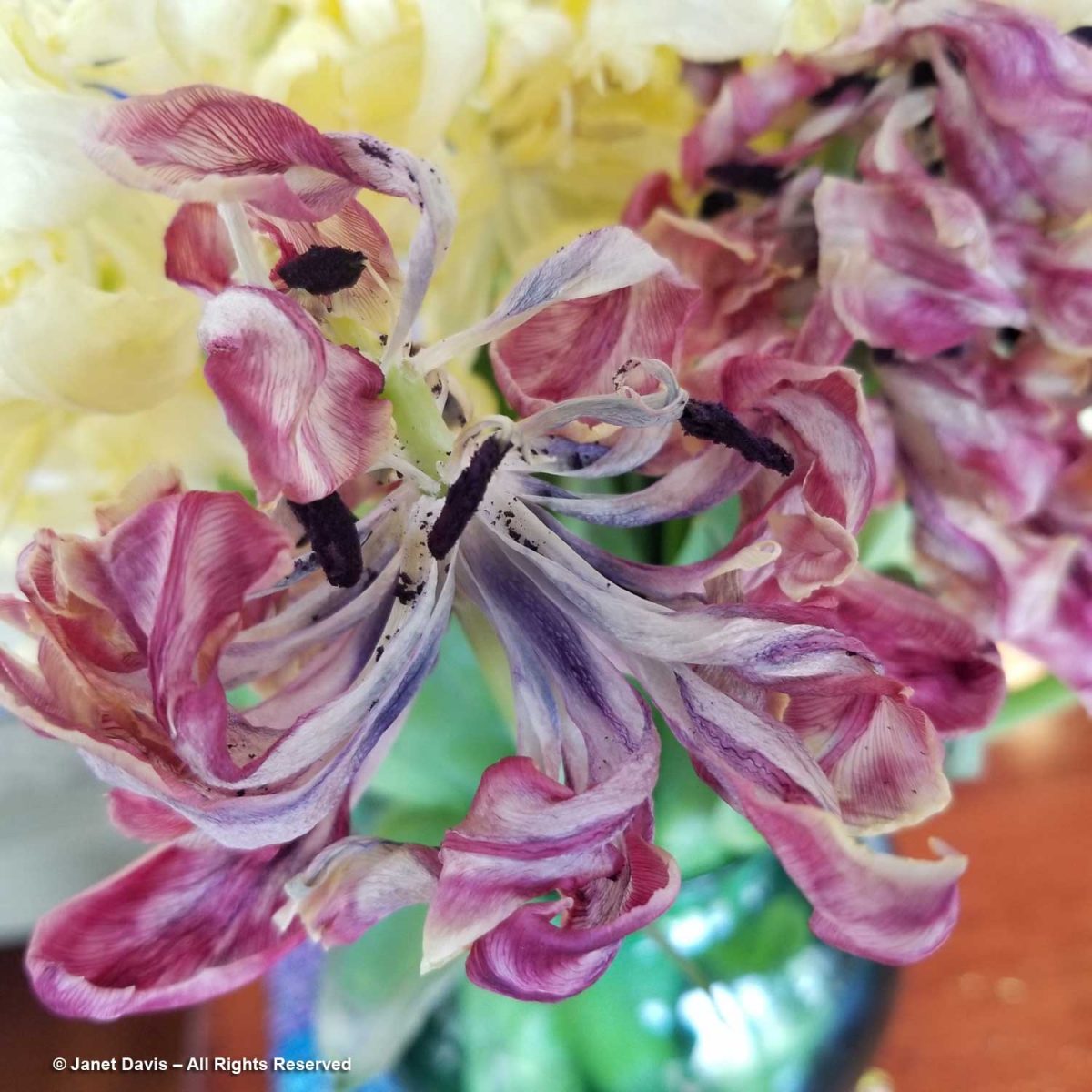
Finally, fifteen days after I brought them home, youthful and freshly budded, old age staked its claim. Black and yellow pollen showered the table amidst the faded tepals.
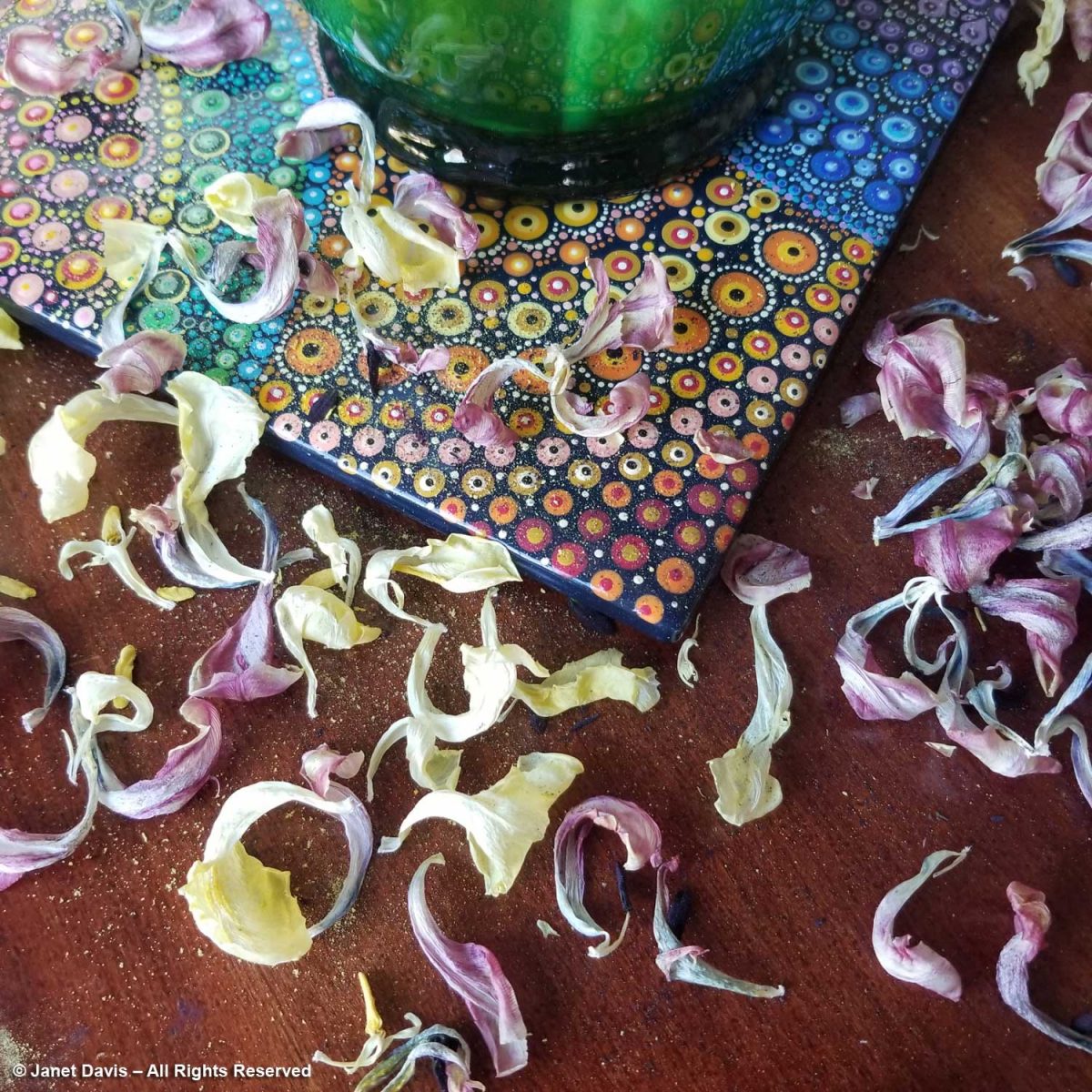
Dust unto dust, carbon unto carbon. To everything – and everyone – its season.
